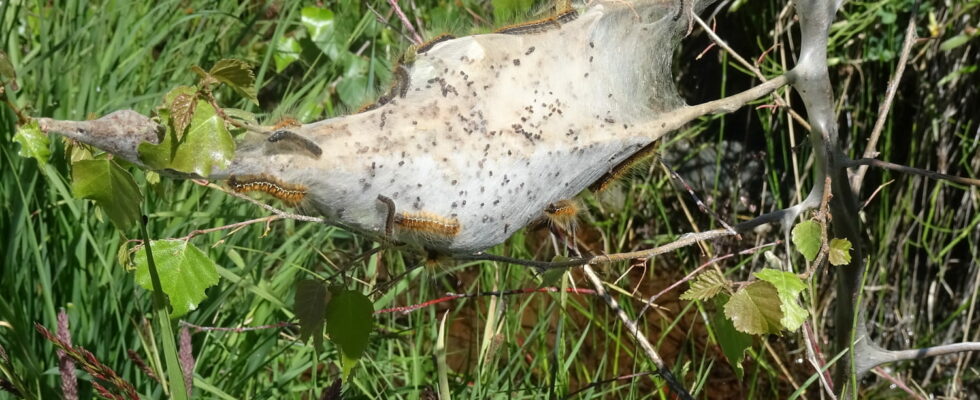This beast becomes dangerous at the end of winter. You can already take steps to protect yourself and your pets.
Sometimes it’s better not to wait to deal with a problem. This is the case with these little animals which can be very dangerous for humans as well as for dogs and cats. Harmless at first glance, these crawling critters must be kept away from gardens and houses if you want to avoid the worst during the migration period, from the end of winter or the beginning of spring.
And it is from January that we must act! Because when they emerge from their cocoon, it is often too late and much more difficult to eliminate them. These little creatures are pine processionary caterpillars. During fall and winter, they nest in silky cocoons clinging to tree branches. In spring, they begin their descent in single file – a procession – to bury themselves in the ground and transform into butterflies a few months later.

Their stinging hairs, released when they feel threatened, contain a toxin (thaumetopoein) which can cause serious allergic reactions. For humans, simple contact with the hairs of the processionary caterpillar can cause itching, redness, conjunctivitis and, in some serious cases, respiratory problems. Children, often curious, are particularly at risk, especially when they try to handle or approach the nests.
For domestic animals, such as dogs or cats, the consequences can be even more severe. When a dog sniffs or bites a caterpillar, its stinging hairs can cause swelling, tongue necrosis, and in some cases, death if not treated quickly.
In addition to its health dangers, the processionary caterpillar is also a scourge for ecosystems. By feeding on pine needles or oak leaves, it weakens the trees, which become more vulnerable to diseases and parasites. Prolonged infestation can even lead to tree death.
The fight against the processionary caterpillar must therefore begin in January, when the larvae are still in their nests. If no action is taken at this stage, populations will explode in the spring, making management much more complex and costly.
To combat them, start by inspecting your trees and spot the nests with the cocoons of processionary caterpillars. It is possible to remove the cocoons by cutting the infested branches. This operation must be carried out with suitable protective equipment, masks and gloves in particular, to avoid any contact with the stinging hairs. Then place the branches with the cocoons directly in the trash. If the nest is too high in the tree, it is then recommended to call a professional who can use a pruner to cut the nest or prune the affected branches.
